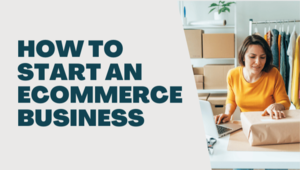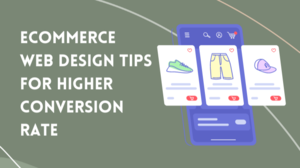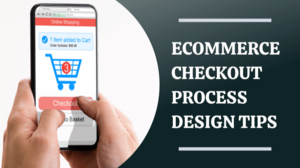Ecommerce SEO A Practical Guide to Improve Your Organic Traffic [10+ Tactics]

Have a look at the organic traffic of this store.
It receives a whopping 18.4K visitors every month from search engines!
This is one of the most impressive organic traffic volumes we have come across during the last few months!
What’s even more surprising (or annoying?) is these guys have not run any paid ads on any search engines (the “PPC 0” in the image above indicates that).
Meaning the traffic we mentioned above is wholly organic. What’s the secret to their success?
The answer is ecommerce SEO.
What is ecommerce SEO?
It is the collection of tactics and practices that make the website of an online store climb up and stay among the top in search results. When it does secure a rank among the top 3, its organic traffic is likely to increase exponentially.
Provided it offers a simplified shopping solution, this heightened traffic would convert into a torrent of sales.
We have been doing SEO in the ecommerce arena for a number of years now.
Our experience has shown it to have four aspects. None of these is more important than the other. If you want significant improvement in your SERP rank, you would need to use all four.
Those are:
The technical aspect
The on-site aspect
The off-site aspect
The UX aspect
We would be covering tactics of each type as well as helpful resources to help you understand ecommerce SEO better.
Here is the first one.
Ecommerce SEO: The technical aspect
As the title says, the technical aspect of ecommerce SEO would get a little…….technical.
It’s not rocket science.
Moreover, you would not have to write hundreds of lines of codes either. So rest assured and follow along.
Visual Sitemap
Most online store owners or ecommerce enthusiasts forget about this.

A visual sitemap offers you a bird’s eye view of how many pages are in your online store, how they are connected and what their contents are.
After reviewing it, you would be able to find out how easy (or difficult) it is for the visitors to tour your store.
Armed with this knowledge, you would be able to create more connections among your store pages. That way, search engine crawlers would be able to crawl through all relevant pages of your store.
The more they crawl through your website, the better idea they would acquire about it.
As a result, your store link would have a better chance to rank. Besides, your store visitors would enjoy better navigation, stay longer and are likely to convert more.
And that gives your link an additional SEO boost!
There are many visual sitemap generators available on the web.
Here are a few for you to choose from:
- Rarchy (Has 3 pricing plans starting from $19).
- DynoMapper Sitemap Generator (Has 3 pricing plans starting from $49/month).
- StickPlan (Offers 30 days trial).
- GlooMaps (Free Tool).
When you have prepped your ecommerce site’s visual map, it’s time for the next step.
Submit your online store site in Google Search Console
Google Search Console is an immensely helpful tool!
It lets you:
- Get a confirmation that Google can find and crawl your online store site.
- Check the traffic volume your site receives.
- Get the list of search phrases that lead people to your site.
- Request indexing of your site and re-indexing of updated content.
But, how you can add your ecommerce store site to the search console?
Well, visit the following to find out:
- How to add your site to search console (video guide).
- A step-by-step guide to adding your site to the search console.
Let’s say, Google has crawled your ecommerce site and indexed it.
What do you need to do next?
Perform keyword research
Keyword research is crucial for effective ecommerce SEO. Let us elaborate.
You want your online store website to rank among the top five for search phrases related to your product or service. But for that to happen, you would need to know those search phrases, right?
That is precisely what keyword research would find out. A large number of keyword research tools are available on the web.
Here are some that we can vouch for:
- WordTracker (7 days trial and 12 free searches available).
- KW Finder (Need to create an account. 10 days free trial available).
- Ahrefs (Two paid plans available).
- SEMRush (7 days trial for registered users and 3 paid plans).
- Keyword Surfer (Free google chrome browser plugin).
- Keyword Everywhere (Free google chrome browser plugin).
Along with relevant keywords, these tools will give you some more information.
For example, you would know:
The monthly search volume of those search phrases.
How difficult it is to rank for those.
The CPC for those queries.
The keywords your competitors are ranking for and many more.
To know more about keyword research, you can visit the following guides:
You are probably wondering what you would do with those keywords. We would cover that in the on-site section of this discussion.
Next, you would need to
Enable breadcrumbs on your ecommerce store site
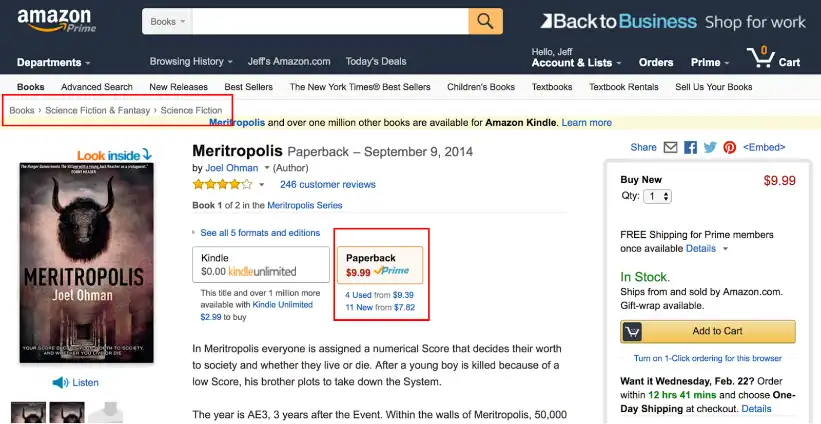
When it comes to websites, breadcrumbs are a means of visual navigation.
In the above image, the red box at the top-left corner tells you which part of the website you are on. That is the job of breadcrumbs.
It also lets you navigate to other pages of a website with just one click. Much easier than using the back button or the search box. So, how can you enable it on your online store?
Well, there is no one-size-fits-all answer to that. Most CMSs offer plugins for this purpose. So search for one that suits your needs.
Or, you can contact the customer support of your CMS.
Breadcrumb navigation is something your customers would experience after they land on your site. But is there something that tells your prospects about your products/services on the SERP?
You bet there is!
That’s what we are going to talk about next.
Add schema markup to your product/service pages
Schema markup is a code segment that you put on your online store website. Does this code segment enchant people to buy from your store?
No, not quite.
But it does display more info on the SERPs. That way, people would tend to find your ecommerce store more reliable and click.
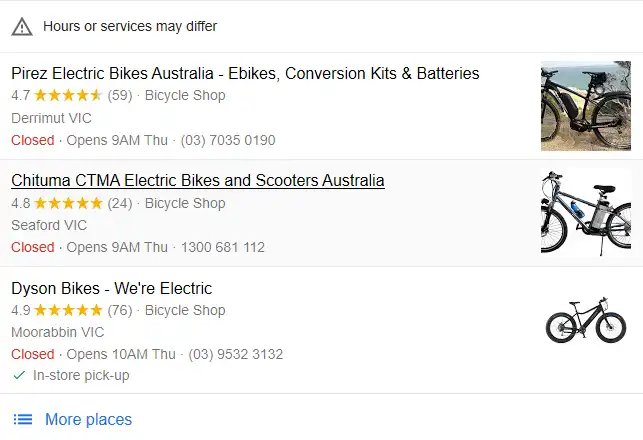
In the above image, you see star ratings, the number of people who reviewed the bikes and other features of that store (in-store shopping, delivery).
It’s the schema markup codes that help display this information on search result pages. Don’t have a panic attack!
You wouldn’t need to comb the web looking for the schema markup codes you need. Google is there for rescue! Its Structured data markup helper tool lets you create markup code for your products or services.
Do read more about schema markup implementation. As you now know, it raises the probability of people clicking on your store link.
If you want to test the markup code on your website, you can use the Structured data testing toolkit. It’s a go-to solution for an increasing number of store owners.
The schema markup is neat. But ecommerce SEO rewards those who use a wide range of tactics. The next tactic you would need to implement is
Test the loading speed of your online store and keep improving it
People hate websites that take longer than 3s to load. Period.
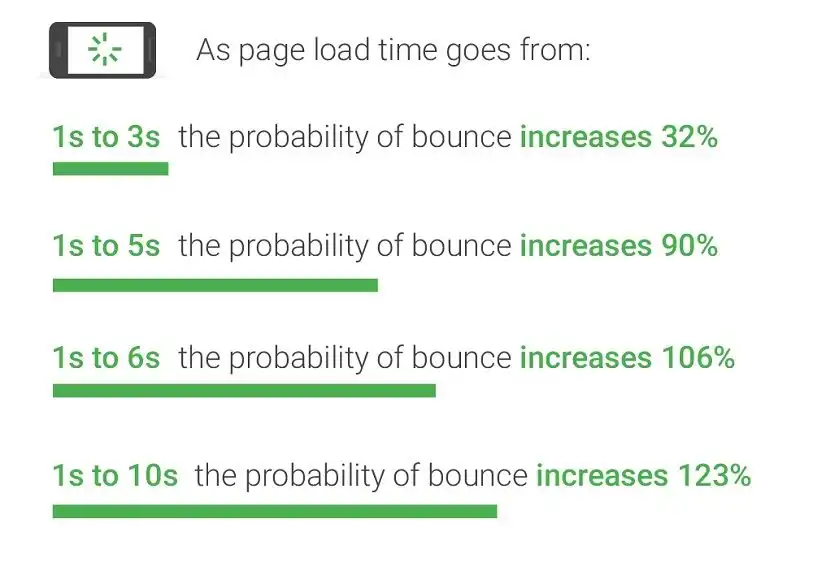
The data in the image above confirms it. So we strongly recommend that you measure the loading speed of your online store.
When it comes to ecommerce SEO (or SEO in general), speed is a ranking factor for search engines. Asking yourself how you can measure your store’s loading speed?
Well, GTmetrix is a tool that helps you with it.
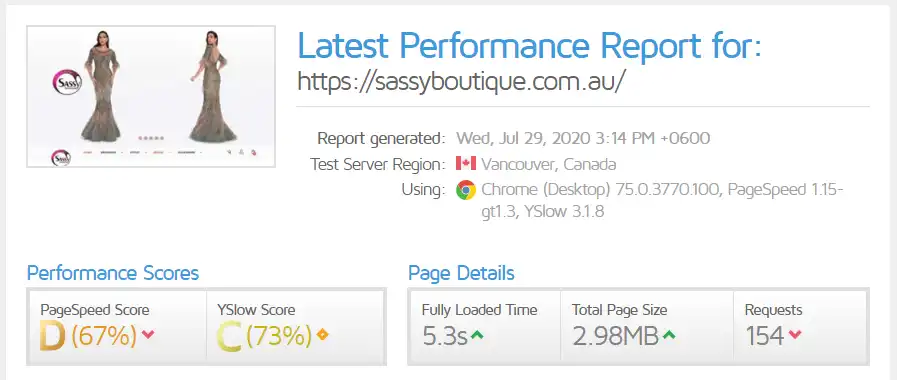
We ran an online store through GTmetrix for a demo. The image above is part of the report this site speed testing tool has generated.
Apart from load time, page size and number of required HTTP requests, it provides you with a ton of recommendations.
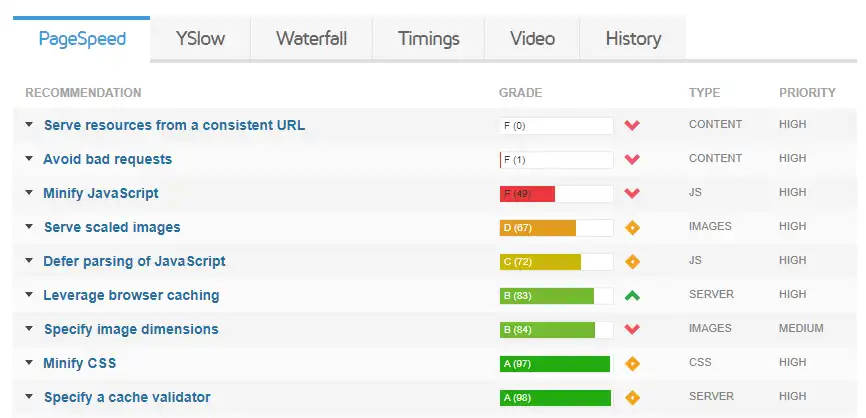
Follow each one of those religiously until your site’s loading time falls below 2s (2s-2.3s is a good range).
For your information, this tool only measures your store load time on desktops. You would need to measure the load time for mobile devices as well.
For that purpose, you can use the PageSpeed Insights tool of Google. Just like GTmetrix, it would provide you with data-based recommendations to improve your site’s mobile performance.
Ecommerce SEO: the on-site aspect
The on-site aspect of ecommerce SEO deals with all issues directly related to your online store website.
The sole purpose of it is to make sure search engine crawlers can easily crawl through all relevant pages with extreme ease and gather precise info about the content of those pages.
Let us go over the things you need to do as part of on-site SEO for your online store.
Inject your target keywords in the right places
Remember the “keyword research” section we discussed earlier? Now, we would talk about where on your website you would put those keywords.
But before that, categorise the keywords you have discovered. How would you do that?
Well, you would need to SERP test each one of those. Suppose one of your keywords is “dress boutiques sydney”.
Look it up on google.
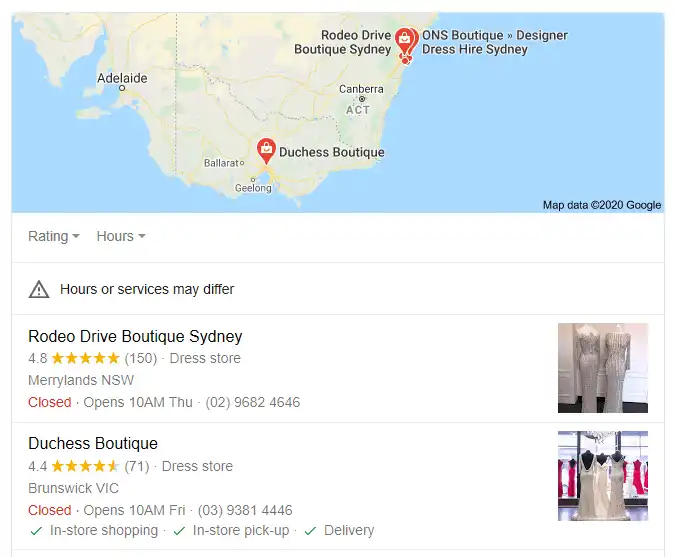
As you can see, the top part of the result includes a map with the addresses of boutiques. Each of the listed boutiques has good ratings and has it’s business hours and contact number listed.
You would need to scroll down, in this case, to know which links google is placing on this SERP.

As you can see in the image above, the homepages of prominent boutiques are on the SERP.
That means when people search using this keyword, they are expecting the homepage or the primary website of boutiques in Sydney.
That means you would need to place it on the homepage of your boutique website (if that is what you own). Similarly, if you look up “cool iPhone 11 cases” in google, the SERP would be different.

As you can see, the snippet section lists the best iPhone 11 cases. The list is from a blog post. Similarly, the other results on this SERP are blog posts as well.
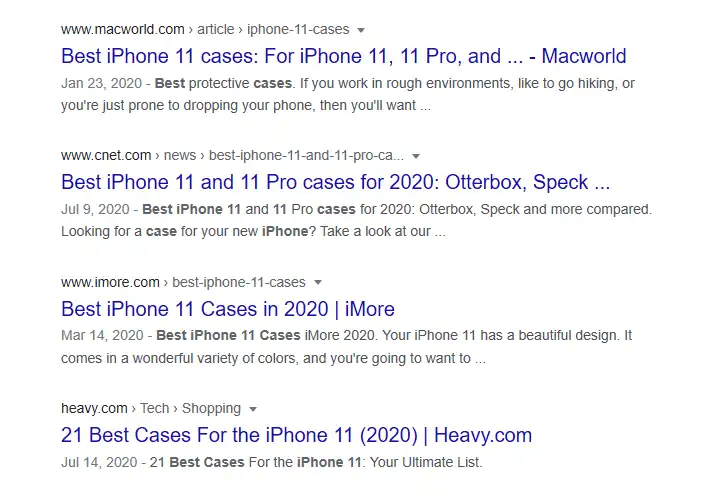
The top results (as well as the bottom ones) are blog posts. Thus, you are more likely to rank for this keyword if you produce a blog post around it.
If you are not sure about the type of SERP content (home page, product pages, category pages, blog posts), just click on two or three.
Browsing through those would give you a clear idea about their content. We suggest you copy and paste these keywords in an Excel file or Google Sheet.
For your convenience, we have included a template for this file.

Tip:
A paid keyword research tool would come in handy when it comes to compiling a list of target keywords for your online store.
Here are some possible places on your website where you would need to inject your keywords:
- The meta-titles of each page.
- The meta-descriptions each page.
- The alt-tag of on-site images.
- In the website copy.
- In the product description body.
Note:
Do make sure the keywords feel natural when you read them. We strongly suggest you have a few people read your online store site copy to ensure relevance.
You now know how to categorise keywords and where to inject them on your store website.
Next, you would need to
Use H1, H2 and H3 tags properly
H1, H2 and H3 are HTML tags.
These tell the spiders of search engines which part of the page is more (or less) valuable. Have a look at the image below to get an idea about their size differences.
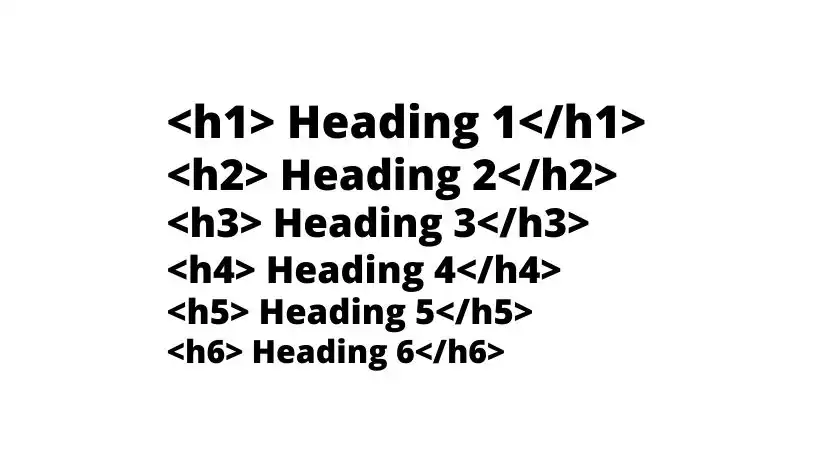
These tags also make the headings and sub-headings appear larger and smaller respectively. Thus, the text on your site gets segmented. Such segmentation drastically improves readability.
Let us demonstrate with an example. Is the text in the image below easily readable?
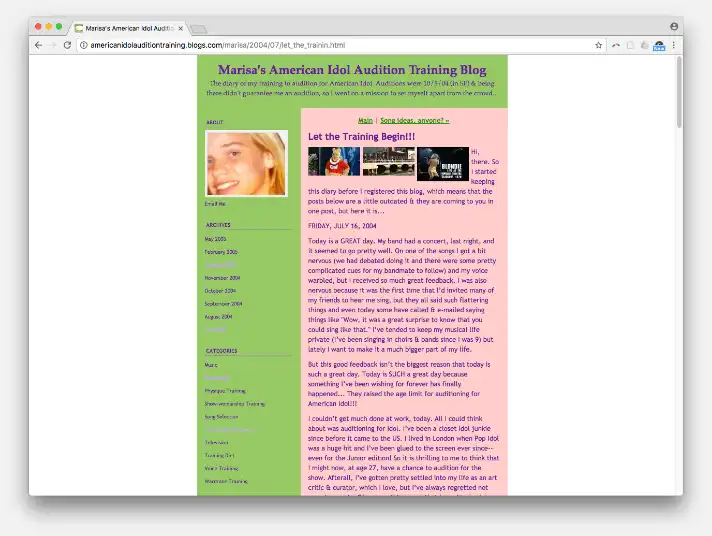
Or would you find the one below segmented by headings and sub-headings more comfortable to read?
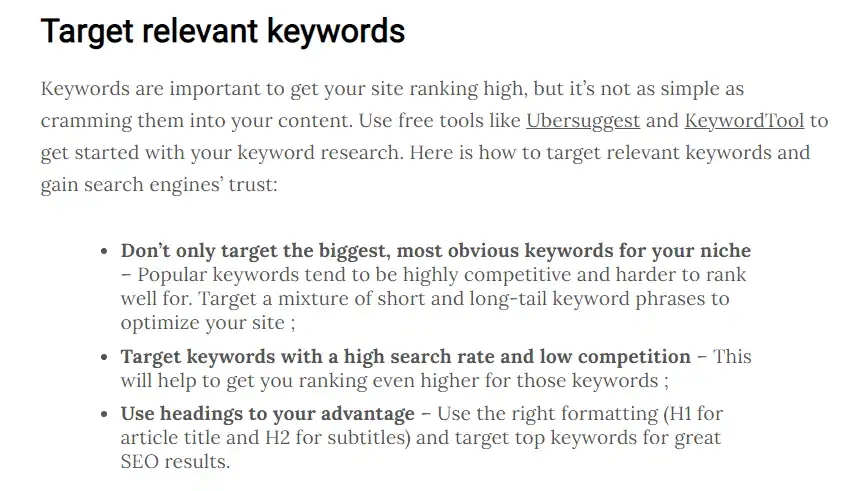
Do remember one thing.
The paragraph right below an H1, H2 or H3 tag should deliver what the heading promises. Following this practice would make your store site text feel more coherent and beneficial.
Search engines happen to rank pages with such beneficial text higher in SERPS.
After you have placed tags on your website, you would need to
Create internal links among pages on your site
Creating internal links among the pages on your online store website is crucial.
First, these links make navigation easier for your visitors.
Second, the crawlers of search engines would be able to cover a greater portion of your site with ease.
Both of these help boost the rank of a link.
Tip:
The text within which you embed the link of another page should be self-explanatory. It should tell visitors what they would find on the page the link leads to.
You would find more tips like these in the guides below:
Internal linking is super useful. But this tactic would not matter unless you
Write catchy meta titles for key pages of your online store
Just ranking at the top does not guarantee traffic to your online store (or any website).
Here is an example.
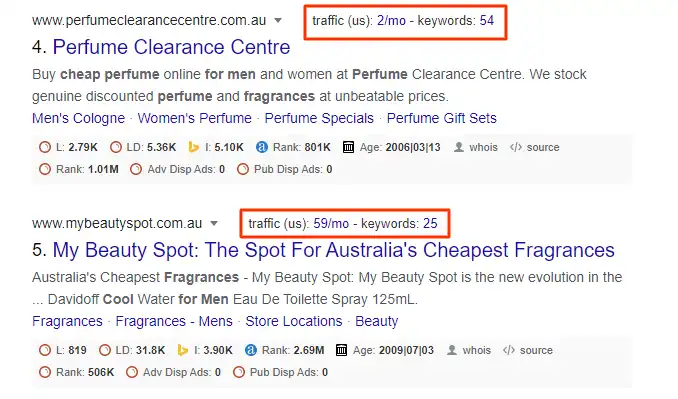
Pay attention to the red boxes in the image above.
The one at the fifth position receives 59 visitors every month. The one above it, surprisingly, receives just 2.
Now, have a good look at the titles of these two links. Which one would you be more inclined to click on?
Most likely, the fifth one. That is because its message is simple yet attractive! No wonder more people click on it!
Creating engaging meta titles is one of the key areas of ecommerce SEO to drive traffic. Believe it or your store traffic would take a nosedive.
Creating catchy titles is targeted more towards visitors. However, a higher ranking in the SERPs would require impressing the search engine crawlers as well.
For that purpose, you would need to
Optimise the URLs of each page of your ecommerce website
URLs are the links to the pages in your online store. Along with site contents, web crawlers crawl through these links as well.
Thus, they are to be short. Short URLs are easier to crawl. But, that alone wouldn’t cut it to boost your store site ranking. Your page URLs out to contain page-specific keywords.

Have a close look at the URL in the image above. It is a fine example of optimised URLs.
The URL would tell the search engine spiders exactly where that page is and what it is about. Even human visitors would also find it easy to figure out what they would find on this page.
There is more to the on-site aspect of ecommerce SEO. However, the scope of this discussion is not broad enough to include everything. So, we have no option but to move on to the next section.
Ecommerce SEO: The off-site aspect
The off-site part of ecommerce SEO includes everything that happens off your online store website. Off-site SEO basically enhances the page authority of your website.
Let us now discuss what you can do as part of off-site SEO to boost your store rank.
The first and the most challenging thing you need to do is
Build links pointing to the desired pages of your online store
The key phrases are “build links” and “desired pages”. We would talk about each other.
Link building is the process of obtaining a link from a high-authority website to your website.
The more links there are pointing to your store from authoritative and relevant sites, the more useful and relevant your store appears to search engines.
As a result, your store link would get an SEO boost and climb the SERP.
You can get such links by several means:
- Guest posting.
- Offering link of your content as a substitute for a broken link on the desired page.
- Paid partnership with another store in the same (or a relevant) industry with more authority.
Do read this guide to find out more about link building for an SEO boost.
Note:
Link building is a continuous process. Your rivals would never cease it. Neither should you.
While you focus on getting links, you would simultaneously need to
Spy on your competitors
Yes, you heard us right. You would need to do some spying on your rivals.
Not the sort that can get you in trouble though. So relax!
If you want to do extensive spying on your rivals, you would need a paid tool such as Ahref or SEMRush. What would you be looking for when spying on the competition?
You would find out which pages are linking to your rival online stores. You would also find the keywords they are targeting.
Last but not least, you would be able to detect the gap between the content of your store and those of your rivals.
This information would streamline your off-site SEO strategy. As a result, you would likely acquire more links in a shorter time.
Like link building, spying on competition is also a continuous process. Even though it is fun, you can’t afford to put all your effort into this.
That because you would also need to
Grow the social media channels of your store
For search engines such as Google, social mentions, and engagement is also an indication of a site’s authority. Let us elaborate.
When Google (or any other search engine) detects that your brand is receiving more likes, comments and shares from real users, it deems you of authority and relevance.
As a result, your brand would receive a boost in rank.
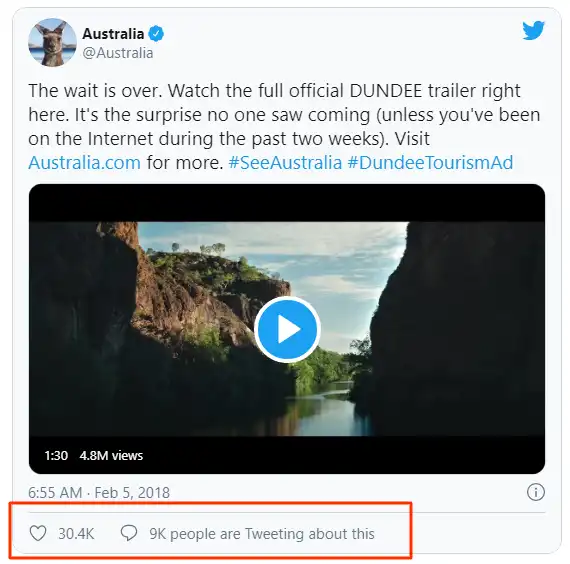
Have a look at the image above.
The “Australia” Twitter page has secured massive not to mention enviable social engagement! Let’s have a look at the Google SERP for the keyword “Australia”.
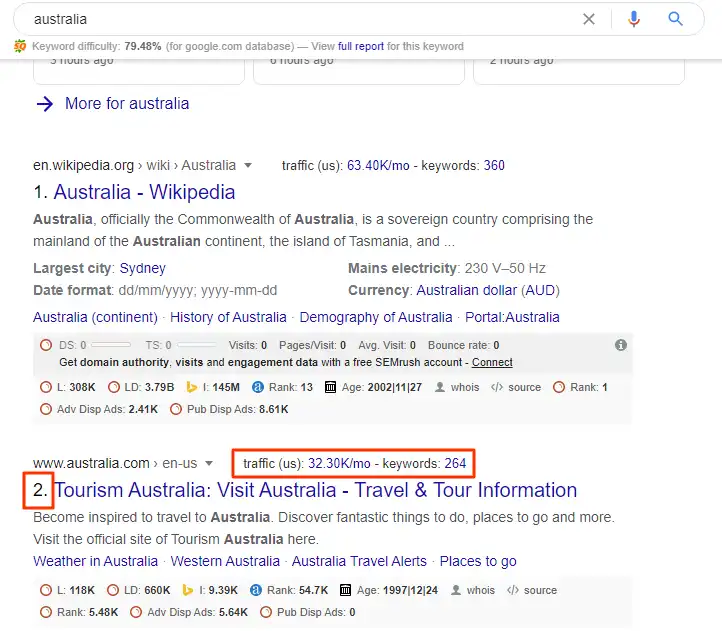
Not only is its link among the top 3 but it also receives a whopping 32K plus visits every month!
Social media engagement is not the sole factor behind such impressive numbers, to be honest. But it sure made a sizable contribution!
So how can you grow your engagement on your target social platforms? According to our experience, the following tactics are of immense help:
- Know exactly who your target audience is. Form a buyer persona of this audience. That way, you would engage them better.
- Do influencer marketing. It is highly effective in starting conversations around your brand.
- Post consistently. The more you would post with well-crafted captions, the more people would interact with you.
- Interact with your target audience shamelessly but in a helpful manner. A good impression goes a long way in social space, just like in real life.
Ecommerce SEO: the UX aspect
UX, User Experience, when expanded, is all about delivering a pleasant and memorable experience to your website visitors.
As a business owner, you want your visitors to have a smooth experience with your store. That is what UX SEO focuses on.
Let us tell you how you can deliver a pleasant and beneficial experience.
Include the “live chat” option in your store
Nothing speaks professionalism and sincerity like the “live chat” option on a website. It relaxes the site visitors and makes them feel close to the brand owner.
However, just having this feature on your store site is not enough.
A late response would irritate your prospect. Not something you would want if a higher rank is your target. Google is smart enough to figure out how usable or beneficial a website is to visitors.
A chatbot would help you with this. With automated responses, you would be less anxious about late responses.
Apparently, live chat alone would not do it.
To reap the benefits of ecommerce SEO, you would need to
Talk about the benefits of your products/services in a humanised manner
The keyword is “humanised”.
Every online store product page lists the features using bullet points. Just like the one below.
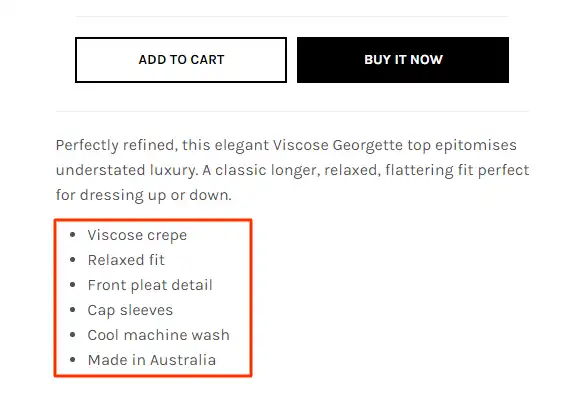
Yes, it does look very clean and minimalistic. However, it does not feel very humane.
The online store below, on the other hand, is a perfect 180! It includes many questions and value-loaded answers.

Questions always tend to attract peoples’ attention. And since there are many questions listed, visitors would have the chance to explore.
As a result, they would most likely stay longer on this page than the one above it.
Search engines would (most likely) interpret this longer stay as a sign of a smooth customer experience. That may not make your store shoot up the SERPs but would undoubtedly improve your rank.
Going the extra mile to make shopping more comfortable at your store is always welcome. So after you have made your product pages more humane, it’s not the time to celebrate.
You would need to
Make your store responsive
Did you know that 1 out of every 2 Australians shop on mobile devices? Well, now that you do, you need to make sure your store appears well on mobile phones.
Some useful tips to make your store responsive are:
- Make sure buttons on your site are bigger on mobile devices.
- Make the “@” symbol appear on the keyboard when users are putting in their email addresses.
- Images are scaled so that they are legible.
- Let visitors call your store phone directly from the website.
These are not all, of course. There are many more ways you can make shopping at your store on phones convenient.
We suggest you leave no stone unturned when it comes to making your store website responsive. It would definitely pay off in terms of better reviews and ranks!
Last but not least
Include videos of your product on your product pages
A product video on your product page has several SEO advantages.
Those are:
- It boosts users’ session duration. That is a signal to Google that your site is useful to people. As a result, your store rank would likely improve.
- It would inform people of the best way of using your product/service. Thus, your store would likely get referred customers. Such heightened website traffic is another signal to search engines that people are getting value from your store. That passes some SEO juice in your site and pushes it up the SERPs.

This store is a fine example. It provides a video as part of the answer to a FAQ question on its product page.
Very beneficial! We have tried to talk about all four aspects of ecommerce SEO without overwhelming you.
Here is some additional info in case you are not entirely convinced of its potential.
Ecommerce SEO: Stats you should be aware of
These statistical data would complete the picture for you:
- Updating your store pages with newer/fresher content would most likely double your organic traffic.
- Only 2 out of every 10 people find no benefit from SEO.
- Video content has the potential to boost conversion by about 400%.
- 9 out of 10 people search on google to find a local business.
- The closing rate of leads acquired by SEO has a closing rate of a whopping 15%.
- About 40% of businesses are spending about AUD 1,500 on SEO.
SEO can secure you “lordship” in the kingdom of ecommerce.
Ecommerce is going to experience super-massive growth in the coming years.
Know what that means for you? Well, the competition is only going to get even more cut-throat!
As a consequence, Google and other paid ad platforms would most likely raise their ad costs. In that case, SEO would be your less expensive alternative.
So, we strongly recommend you amp up your SEO expenditure. In the unforgiving kingdom of ecommerce, SEO would be your oasis.
Treat it that way.
At this point, if you have any questions, do send them our way. And of all the tactics we have discussed, which one do you think you would like to try first?
References:



